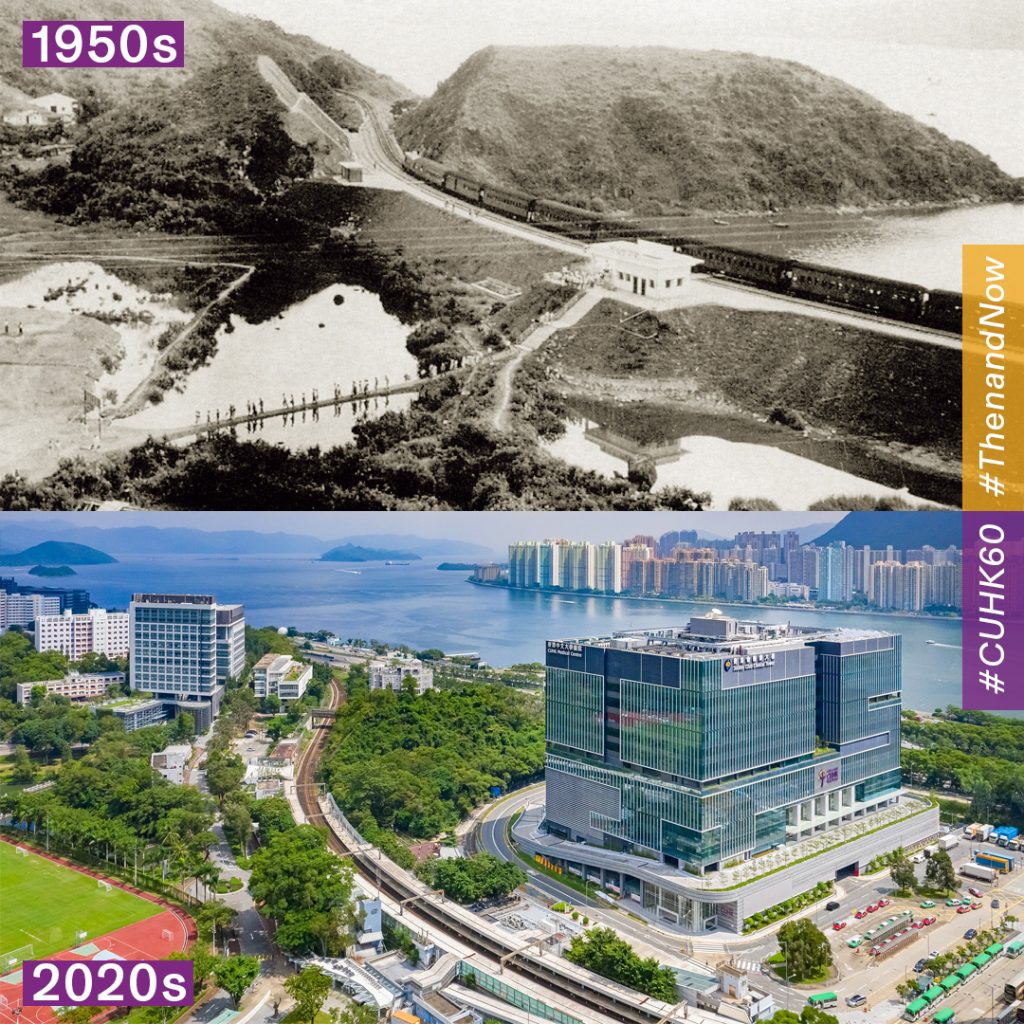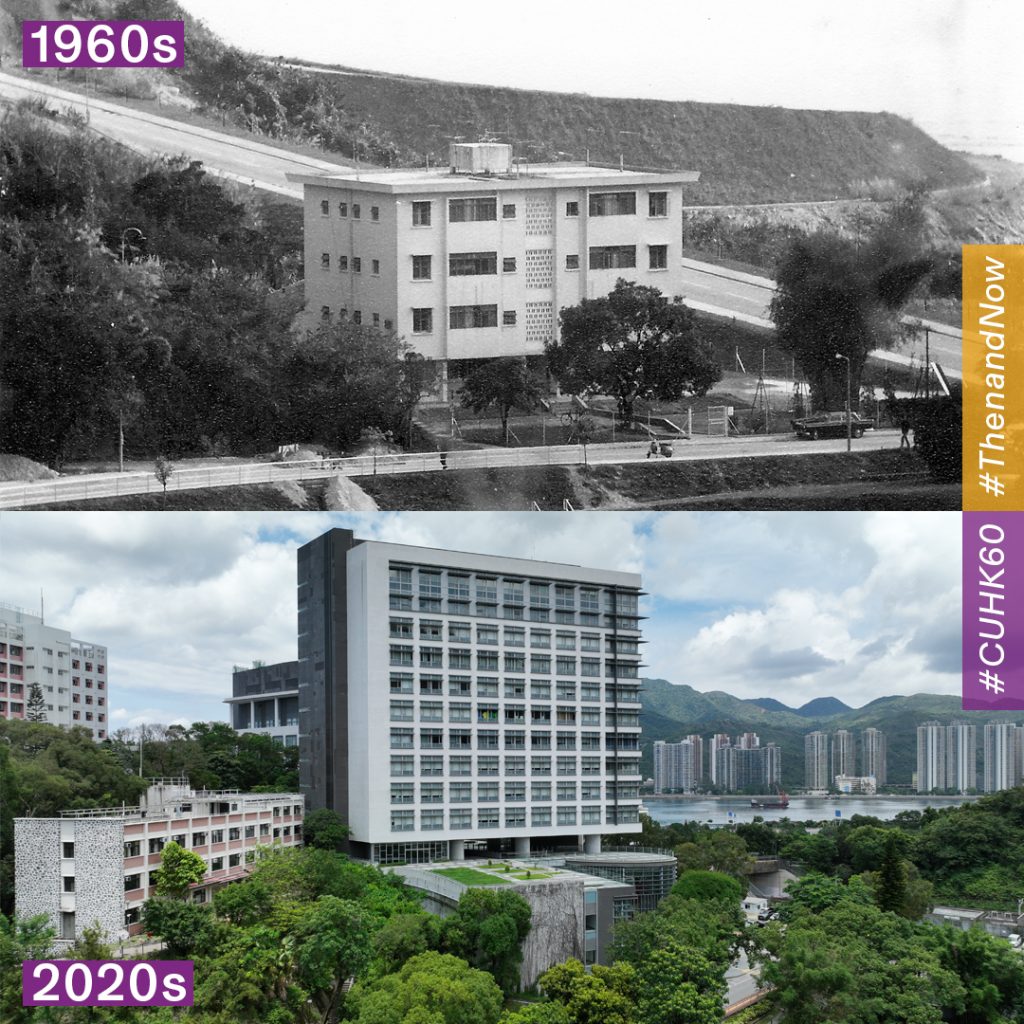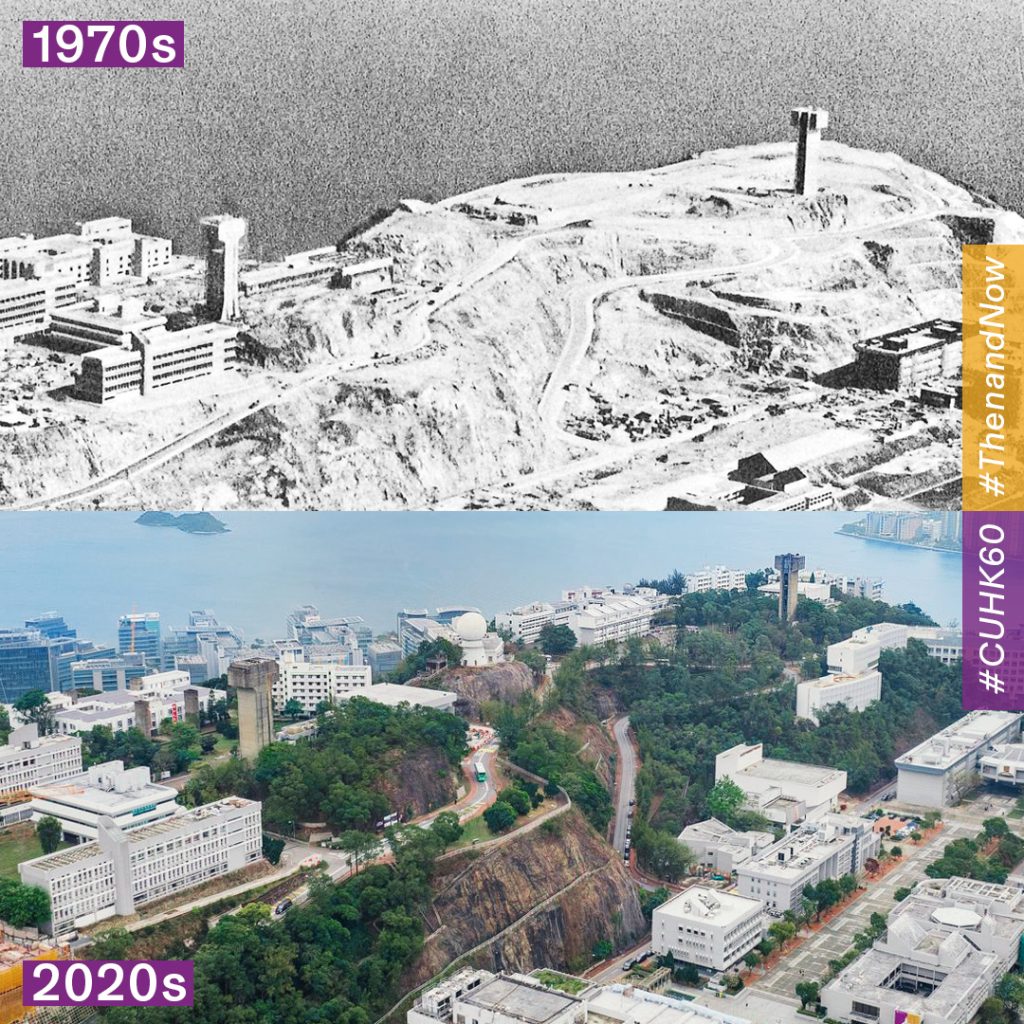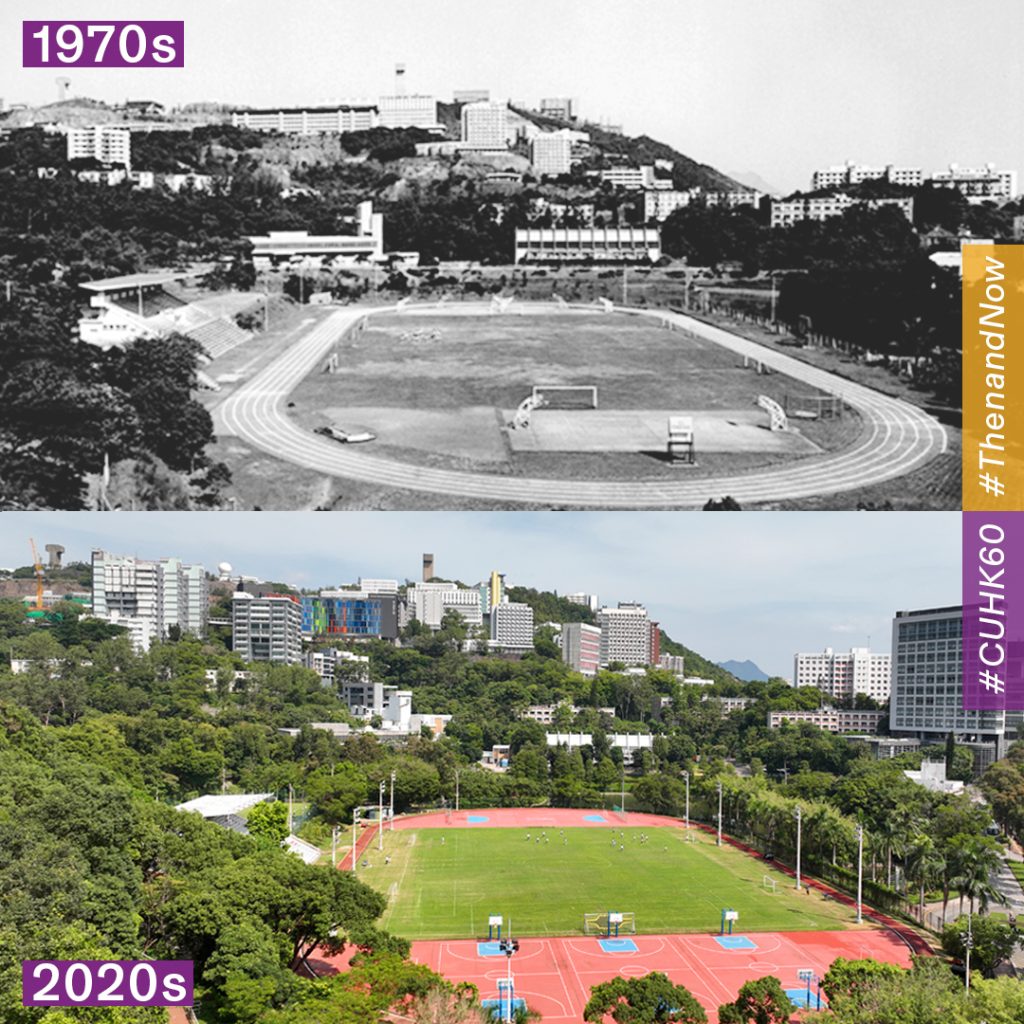CUHK’s Then and Now
Over six decades, The Chinese University of Hong Kong (CUHK) has grown from a humble beginning on barren hills to a comprehensive research university. Thanks to the visionary educational ideals of its founders and the concerted efforts of the CUHK community, the University stands alongside some of the most iconic names in global higher education among the top 40 institutions of higher learning in the world. In the “Then and Now” Series, we will feature how CUHK blazed its own path through stories of various landmarks.

Lake Ad Excellentiam
Lake Ad Excellentiam in Chung Chi College is a popular check-in spot for CUHK members and visitors. Whenever its cypress trees turn red, the picturesque scenery will grab passersby’s attention.
The Lake Ad Excellentiam today used to be the farmland and streams of Ma Liu Shui Village, and gradually evolved into the Lily Pond in the 1960s. As there was always sludge flowing down from the mountain, ongoing leveling and dredging were required. A major renovation was completed by Chung Chi College in 1997 with the support of various alumni, turning it into one of the CUHK landmarks of today.
The Lake contains “two ponds, two bridges and one path”. Among them, the “Philosophy Path” encourages students to ponder about life philosophy and follow the path of sages.

University station
Back in the late 1960s to early 1970s, most CUHK students did not live on campus due to the shortage of hostel places. Commuting to and from the university was inconvenient, with the diesel train being the main means of transportation for staff and students. As the trains through University Station (previously known as Ma Liu Shui Station) operated at hourly intervals on a single track, chasing the train was the daily routine and a collective memory for many.
Nowadays, the East Rail Line trains run at about three-minute intervals during peak hours, so travelling to the University is very convenient. Also, over 50% of CUHK undergraduates reside in the hostels of our Colleges. Altogether, with the postgraduate halls, over 9,000 students can enjoy a vibrant community life.

The Benjamin Franklin Centre

University Library
The University Library has silently accompanied different generations of students through their life in CUHK. Established in 1965, the University Library was originally located in the On Lee Building in Kowloon. In 1969, it moved to temporary quarters in the Benjamin Franklin Centre on Shatin campus. In 1972, the five-storey library building was officially opened in the central area of the campus. To accommodate the increase in users, the Library has built new extensions for its constantly expanding physical and digital collections over the years.
Today, the University Library houses extensive collections and provides users with a wide range of facilities and resources. It offers approximately 2.8 million print volumes, 5.4 million ebooks, 160,000 electronic journals and 1,000 databases. On top of the University Library, CUHK Library comprises six other libraries on campus and in the local teaching hospital.

University Main Entrance
As one of the widely known CUHK landmarks, the University Main Entrance is commonly known as “the four pillars” and formally known as “huabiao”. After the central administrative offices, United College and New Asia College moved to Shatin in the 1960-70s, the impressive structure was erected at the main entrance of CUHK in 1974. It comprises four stone pillars and a sign bearing the University name calligraphed by Dr. Li Choh Ming, the founding Vice-Chancellor of CUHK. With no gates or barriers, the Main Entrance symbolised the University’s boundless connection to the community and its commitment to public service.

University Mall
The University Mall, which locates in the centre of main campus, is known as “The Million Mall” among students. Some said the name is originated from its construction cost, and some said it’s about the number of floor tiles or the fret pattern on the floor tiles. Since 1976, CUHK has held its congregation ceremony at the University Mall. Whenever large marquees are set up there, it means our fresh graduates’ big day to pursue the next avenue of life is approaching.

Yasumoto International Academic Park
The Yasumoto International Academic Park (YIA) was formerly the Bamboo, Pine and Cypress Lodge Staff Quarters. In response to the “3-3-4” education reform, they were converted into YIA in 2012, and this new academic landmark was opened in the following year.

Water Towers

Sports Fields and PE lessons
In the coming year, we will share more of our 60-year voyage on CUHK’s social media channels to commemorate our anniversary. Follow us to learn about our latest happenings!





